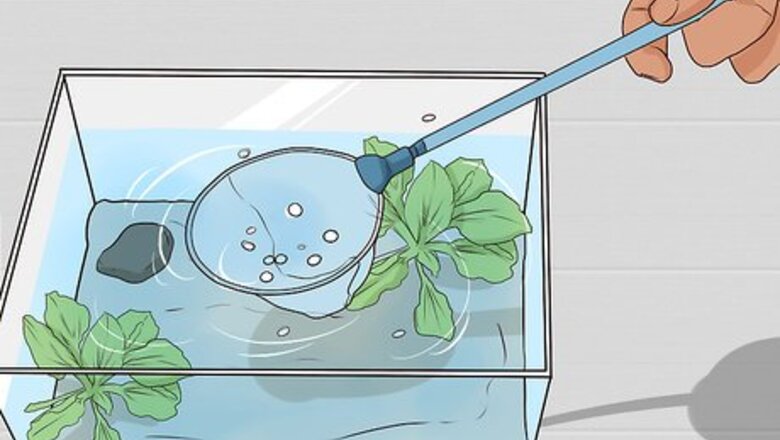
views
Performing Regular Maintenance
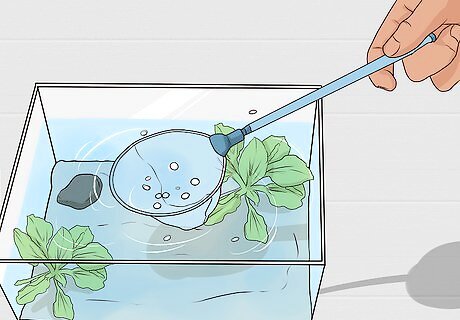
Remove uneaten food. While you should only be feeding the fish in your tank enough food for them to consume within an hour, there may occasionally be food leftover. Take a net and skim any uneaten flakes or pellets out of the tank about an hour after you've fed your fish. If you leave uneaten food in your saltwater tank, it can decay and make the water cloudy. If your fish usually don't eat all the food you feed them within 5 minutes (or a bit longer for frozen foods or nori), reduce the amount you feed them.

Rinse the collection cup. On a weekly basis, remove the collection cup from your protein skimmer. Dump the dirty, brown water out of the cup and rinse the cone and cup with fresh water. Place it back in the protein skimmer. If you wait to dump the collection cup, the skimmer won't be as effective in cleaning the water and the cup may even overflow with thick, foamy water.
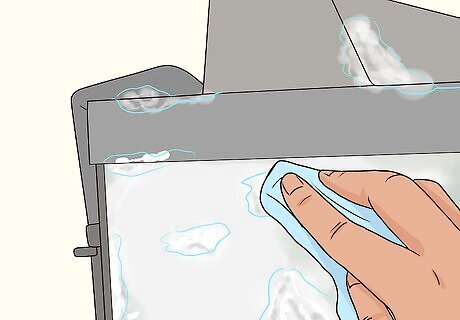
Wipe away any salt creep you see. As saltwater evaporates from your tank, a crusty, white salt residue will build up on power cords or near the top of the tank. Dip a clean cloth in fresh water and wipe away the salt. Use a dry cloth to dry the cords or tank. You should check for salt creep every day. It's a lot easier to remove salt creep if there's only a little of it. Excessive salt creep can actually wear down your cords and tank. Use vinegar to remove salt deposits on the outside of your aquarium.
Following a Biweekly Cleaning Schedule
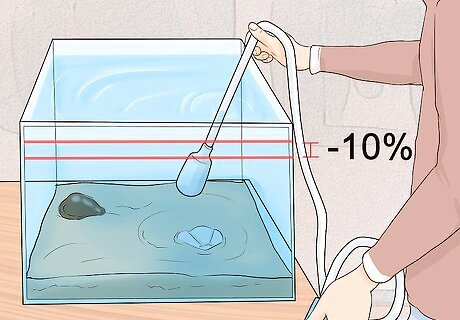
Remove 25% of the water. You should replace about 25% of the tank's water every month. Turn off the power to the tank and take off the cover glass. Use a siphon to remove 25% of the water from the tank and put it in a bucket. Discard the old water. Take the opportunity to clean filters, hoses, and pumps before you add the new salt water. Also, siphon the substrate to clean it when you do water changes. Just be sure to avoid siphoning coral sand by adjusting the flow of water either by kinking the line or covering the end of the hose with your finger. Match the volume and frequency of your water changes to the bio-load of the aquarium. If you have a larger bio-load, you may need to do larger water changes in order to maintain stability.
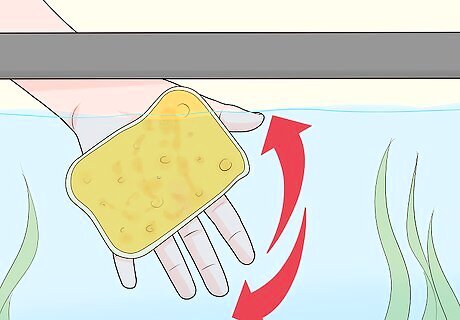
Clean the glass panes of the tank. Use a specialty aquarium sponge to scrub the inside and outside of the tank glass. Or, use an algae scraper to remove algae that are stuck on the glass. You can even buy a magnet cleaner that will make it easier to clean the inside of the tank without sticking your arm in. If you opt for a magnet, choose one that's large enough for the thickness of the acrylic or glass your tank is made from. Make sure the magnet is safe for use on acrylic, if applicable. If the glass becomes dirty, you may need to clean it more frequently. Try cleaning the glass every other day. This is easy and only takes a few moments if you use a magnet. Never use a kitchen sponge to clean your aquarium. By a sponge made for use in aquariums.
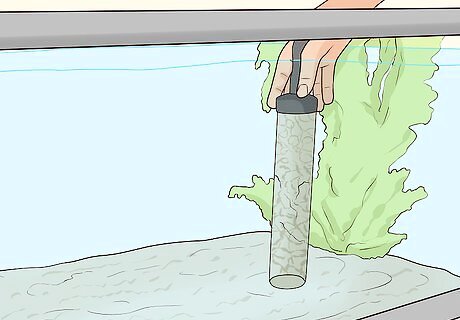
Vacuum the substrate. Get in the habit of vacuum cleaning the gravel or substrate every time you change the water and clean the aquarium. Use a traditional gravel siphon to remove detritus from the substrate that can impact the water chemistry. Make sure the tube on your siphon is suitable for the density of the substrate and the depth of the water. Follow the manufacturer's instructions for the siphon. You'll generally have to hold the siphon 2–3 inches (5.1–7.6 cm) above the substrate when you clean it. Adjust the flow of the siphon as necessary.

Wipe the protein skimmer. Every few weeks you should wipe the neck of the protein skimmer clean. This will make the skimmer more efficient and prevent dirty buildup. To clean the neck, just take a paper towel or clean cloth and wipe the neck clean. If you notice slimy, gunky buildup, you may need to take the skimmer apart and soak it in vinegar. Rinse it clean and reinstall it. Note that the buildup in the skimmer is called skimmate and is a sign that the skimmer is working properly. The skimmate should be a dark liquid, similar to how coffee looks. If you're getting dry skimmate, adjust your skimmer as per the manufacturer instructions so that it produces a wetter skimmate.
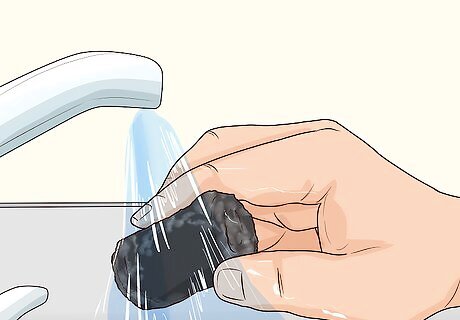
Rinse the prefilters. Remove the prefilters from your tank and rinse them under fresh, running water that has been treated. Reinstall the prefilters. Try to do this every 2 weeks so they don't become clogged with organisms or dirt. Replacing them frequently or rinsing them with tap water is not recommended, as that can remove beneficial bacteria.

Add new salt water to the tank. Before you start cleaning your tank, mix dechlorinated or reverse osmosis water to the appropriate salinity with marine salt, aerate it, and heat it to the correct temperature. It's best to do this the day before, or at least a few hours before, you do any water changes or cleaning to give the salt time to fully dissolve. After you've cleaned the tank, turn the power back on, add the water, and put the cover glass back onto the tank. Be sure to only use dechlorinated or reverse osmosis water in your tank. Some reef-quality mixes do best if used within a few hours, so check the instructions on your marine salt. To check the temperature, look at the thermometer in the tank. To check water salinity, use a hydrometer or a refractometer—drop a sample of water onto a plate of glass and visually inspect where the water registers on the salinity scale.
Following a Long-Term Cleaning Schedule
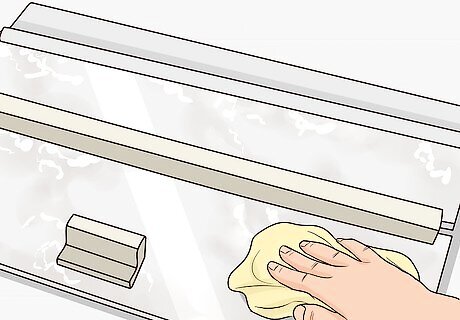
Clean the aquarium and lighting fixture covers. About once a month you should remove the aquarium cover glass and the plastic lighting cover. You'll probably see white, crusty residue from the water. Take a damp cloth or paper towel and wipe off the salt creep. If the residue doesn't come off, it's probably calcium deposit. To clean calcium deposits, soak a sponge or cloth in white vinegar and scrub the deposit away. Be sure not to get vinegar in the tank itself and avoid using any other types of cleaners or acids on the tank itself. If your tank lid is really crusty, soak it in muriatic acid. Be sure to properly ventilate your workspace and wear safety gear. Rinse away the acid fully before replacing the lid on the tank.
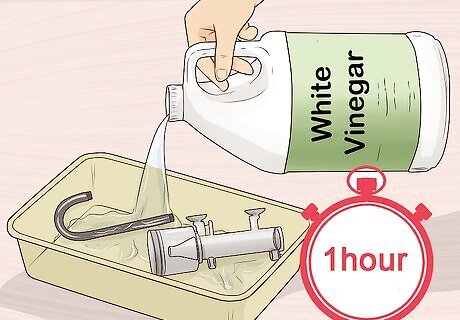
Clean the air intake hose and skimmer. Take the air intake hose and valves from the protein skimmer off and clean them once a month. Rinse them in reverse osmosis water. If necessary, you can soak these parts in white vinegar. Take a small aquarium brush and remove any calcium deposits that you see. Rinse the parts off and return them to the protein skimmer. If the intake hose and valves become clogged with calcium, the skimmer won't effectively make foam.
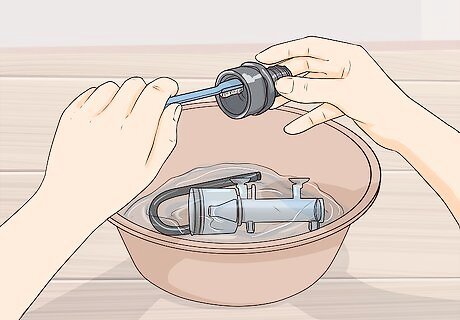
Deep-clean the aquarium every few months. Use an aquarium brush to scrape away the algae or soak the parts of the aquarium in white vinegar. Do this every other month or as soon as you notice gunk building up in the tank. Use opaque pipes and tubes to avoid issues with algae buildup inside them. Focus on deep cleaning these parts of the tank: Protein skimmer Return pump Biofilter overflow box Powerhead Heater Thermometer Hoses




















Comments
0 comment